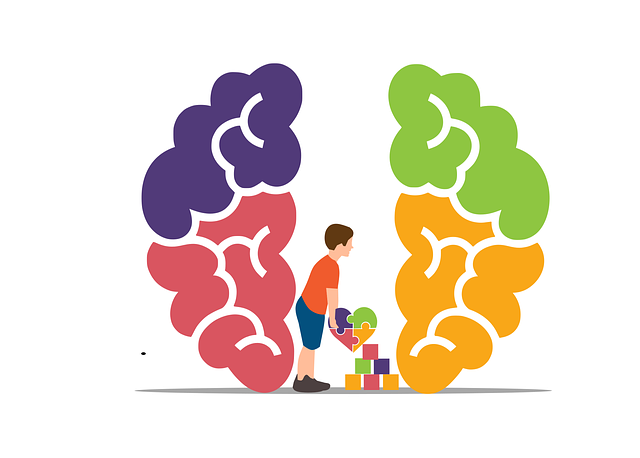Centennial Divorce Therapy prioritizes client safety and treatment effectiveness through comprehensive risk assessment, considering psychological states, environmental factors, past trauma, and coping mechanisms. Crisis intervention training and cultural competency equip therapists to navigate challenges, reduce stress, and foster safe environments. Harm minimization strategies, including public awareness campaigns, build a supportive community, reducing therapy-related stigma. Combining mindfulness, self-care, and coping skills development, Centennial Divorce Therapy holistically empowers clients to thrive during life transitions. Continuous improvement systems, like case note reviews and patient feedback, ensure risk management strategies remain current with best practices.
Risk assessment and harm minimisation are cornerstone practices in therapy, vital for ensuring client safety and fostering supportive environments. This article explores these crucial concepts through a unique lens: Centennial Divorce Therapy. We delve into understanding risk identification, exploring harm minimisation strategies, examining complex emotional landscapes, and implementing effective structured approaches. By the end, readers will grasp how to navigate challenges, enhance practice, and provide robust support in therapy sessions.
- Understanding Risk Assessment in Therapy: Identifying Potential Hazards and Vulnerabilities
- The Role of Harm Minimization: Strategies for Safe and Supportive Practice
- Centennial Divorce Therapy: Navigating Complex Emotional Landscapes with a Structured Approach
- Implementation and Continuous Improvement: Ensuring Effective Risk Management in Clinical Settings
Understanding Risk Assessment in Therapy: Identifying Potential Hazards and Vulnerabilities

In the realm of Centennial Divorce Therapy, understanding risk assessment is paramount to ensuring client safety and effective treatment. This process involves meticulous identification of potential hazards and vulnerabilities that may arise during the therapeutic journey. By proactively evaluating these risks, therapists can develop tailored interventions aimed at mitigating negative outcomes. A comprehensive risk assessment considers not only the individual’s psychological state but also environmental factors, past trauma, and coping mechanisms, ensuring a nuanced approach to care.
Crisis Intervention Guidance and Healthcare Provider Cultural Competency Training play significant roles in this context. Therapists equipped with these skills are better prepared to navigate challenging situations, implement effective Stress Reduction Methods, and foster a safe environment for vulnerable individuals. This proactive approach not only minimizes harm but also enhances the therapeutic alliance, ultimately contributing to positive client outcomes in the long term.
The Role of Harm Minimization: Strategies for Safe and Supportive Practice

In the realm of mental health care, harm minimization plays a pivotal role in fostering safe and supportive practices. This approach is particularly relevant in scenarios like Centennial Divorce Therapy, where sensitive issues are at the forefront. By implementing strategies that prioritize harm minimization, therapists can create an environment that encourages openness while mitigating potential risks. One effective strategy involves building cultural sensitivity within mental healthcare practice, ensuring that therapeutic methods align with diverse client backgrounds and beliefs.
Public Awareness Campaigns Development can also contribute to this process by increasing Mental Health Awareness and reducing the stigma associated with seeking therapy. Through education and open dialogue, harm minimization becomes an integral part of community support systems. By fostering a culture of understanding, therapists can better navigate complex situations, providing effective interventions while upholding the highest standards of care.
Centennial Divorce Therapy: Navigating Complex Emotional Landscapes with a Structured Approach

Centennial Divorce Therapy offers a unique and structured approach to navigating complex emotional landscapes often associated with divorce. This therapeutic model recognizes that breaking up after years of shared history can be a particularly challenging process, requiring careful navigation through a maze of emotions. By employing Mindfulness Meditation techniques, therapists help individuals cultivate awareness and acceptance, enabling them to cope more effectively with the changes ahead.
The practice integrates Mind Over Matter principles, empowering clients to take control of their emotional responses. Through Coping Skills Development, individuals gain practical tools to manage stress, enhance resilience, and promote positive self-care during this transitional period. This holistic approach ensures that those going through divorce not only survive but thrive in the face of life’s inevitable shifts.
Implementation and Continuous Improvement: Ensuring Effective Risk Management in Clinical Settings

In clinical settings, effective risk assessment and harm minimization planning are non-negotiable for providing quality care, especially in areas like Centennial Divorce Therapy where vulnerable individuals and families seek support during challenging transitions. Implementing robust systems for continuous improvement ensures that risk management strategies evolve with emerging research and best practices. This involves regularly reviewing case notes, conducting staff debriefings, and gathering patient feedback to identify gaps and opportunities for enhancement.
By integrating initiatives such as Social Skills Training and promoting Self-Care Practices through the Mental Wellness Podcast Series Production, healthcare providers can foster a culture of proactive risk management. Regular updates to harm minimization plans based on these insights not only strengthen clinical outcomes but also contribute to the overall well-being of both patients and therapists, creating a safer and more supportive therapeutic environment.
Risk assessment and harm minimization are integral components of responsible therapy practice, especially in complex scenarios like Centennial Divorce Therapy. By meticulously identifying potential hazards and vulnerabilities, therapists can develop robust strategies for safe and supportive care. The structured approach demonstrated through Centennial Divorce Therapy serves as a powerful tool to navigate emotional landscapes, ensuring clients’ well-being and fostering positive outcomes. Continuous improvement in risk management is crucial, encouraging therapists to adapt and refine their practices for optimal client care in clinical settings.














